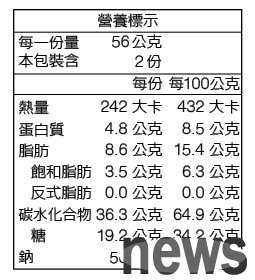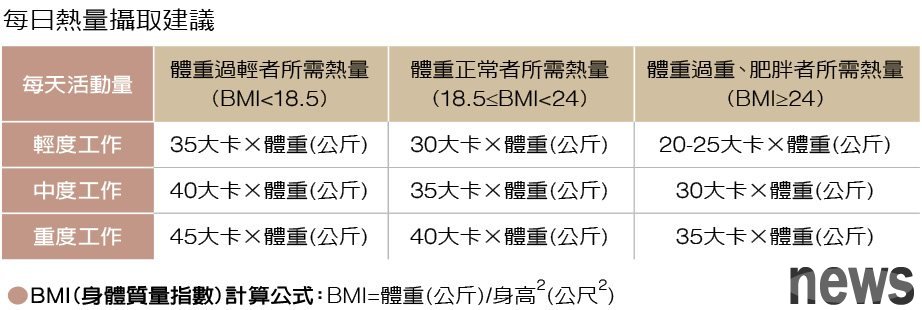
According to the investigation statistics of the National Hospital, more than tens of thousands of people choose to eat breakfast and lunch in Taiwan, which is most common among students and office workers. However, external food often has disadvantages such as excessive serving size of main dishes, insufficient amount of vegetables, and the difference in the vegetable oil and lunch box styles that do not consider personal dietary needs. To avoid ignoring balanced nutrition for frequent external food, it is recommended that when foreign food buy food, the first thing to learn to understand the "nutritional signs" of food can you eat safely and healthily.

The "per serving" heat on food packaging is not the total heat of the whole package. Sometimes a pack of food contains more than one serving. For example (image): "This pack contains 2 servings". Although the heat amount of each serving is only 242 calories, if you finish a whole pack at a time, you have to multiply 242 calories by 2, and the total heat amount will be as high as 484 calories. Therefore, before eating, you must first see how many portions are marked on the packaging, and then multiply by the heat amount of each portion to the actual total heat amount.
{9 For example, a light worker weighing 60 kg and 160 cm needs about 1,800 calories (30 x 60), of which the heat supply of fat accounts for 20% and about 360 calories, which means that 40 grams of fat is needed every day, and an average of about 14 grams of fat can be consumed per meal (less than 1 tablespoon of oil). And the ratio of raw and fatty acids should not exceed one-third of the total fat, that is, if you need to eat 14 grams of fat per meal, the raw and fat intake should be less than 5 grams per meal. Know carbohydratesCarbohydrates are the main source of energy in food, also known as "saccharide", which contains powder, fiber, oligosaccharides, and "sugar". Common foods such as rice, noodles, flour products, root penis, etc. are all called "saccharides"; and the "sugar" next to the word "rice" refers to "refined sugar" that is added or contained in the food itself, such as sugar, sucrose, fructose, etc.
Generally, when the heat is calculated, each gram of carbohydrate contains 4 calories of heat, and the dietary fiber is calculated at 2 calories per gram. It is recommended that Chinese people consume 20-38 grams of dietary fiber per day. Carbohydrate intake in adults' daily diet should account for 50-60% of the total heat. Take light workers with a weight of 60 kg and 160 cm as an example. The supply of carbohydrates should account for 50% of about 900 calories. You need to eat 225 grams of carbohydrates every day. On average, 75 grams of carbohydrates can be consumed per meal for three meals a day, of which the dietary standard is recommended to exceed 6 grams.
Understanding nutritional signs and your own hot needs will help make smarter choices when dining out to avoid consuming high-hot foods.

Responsible editor: Gu Zihuan